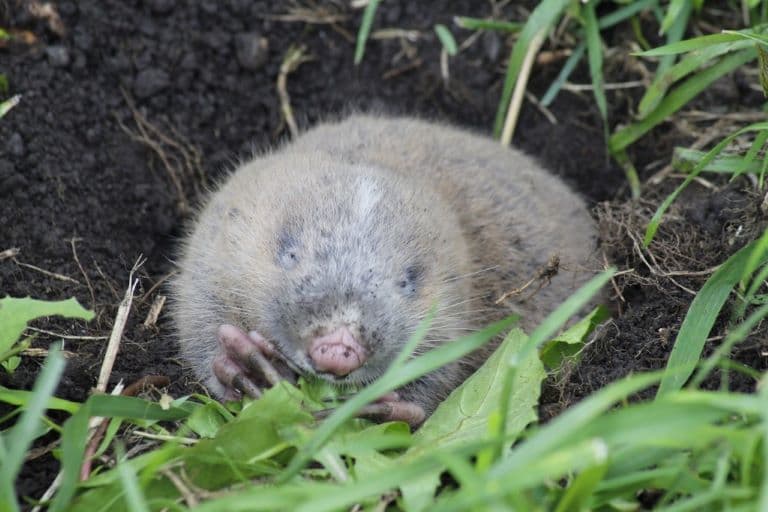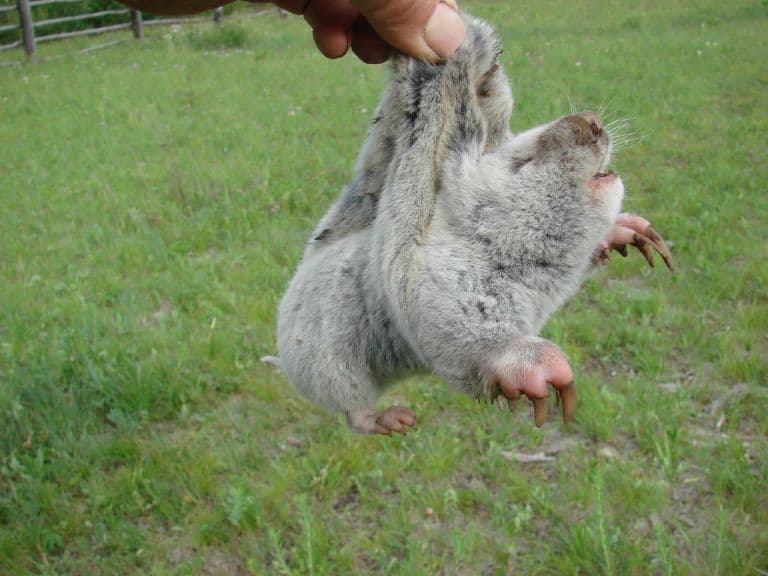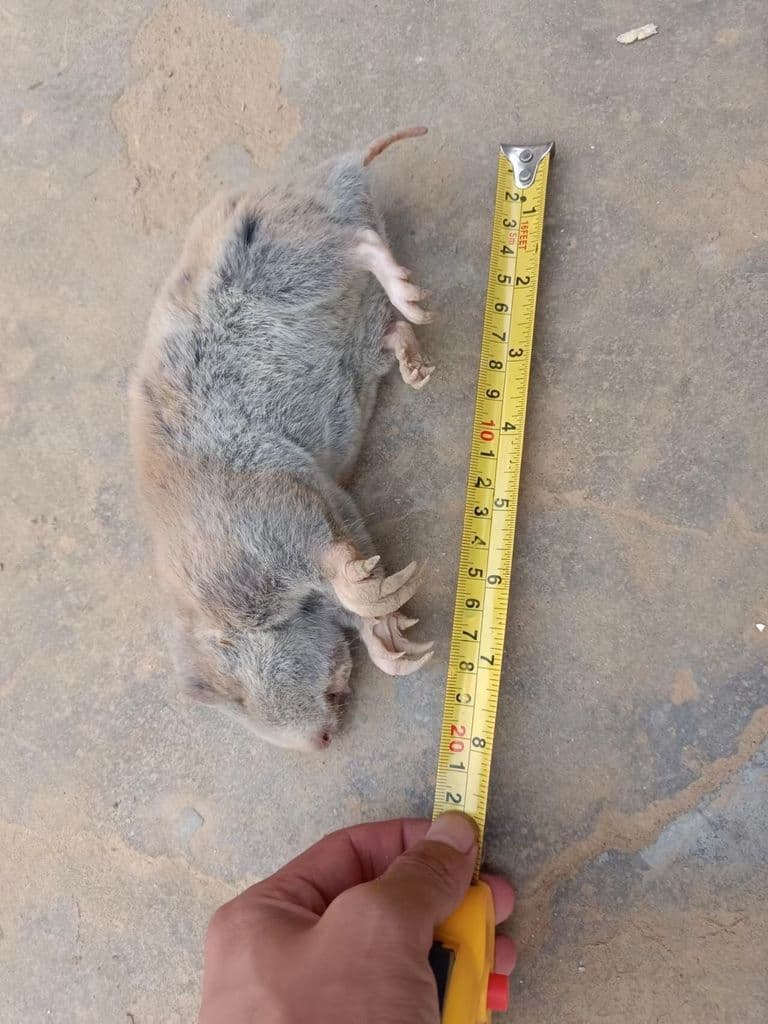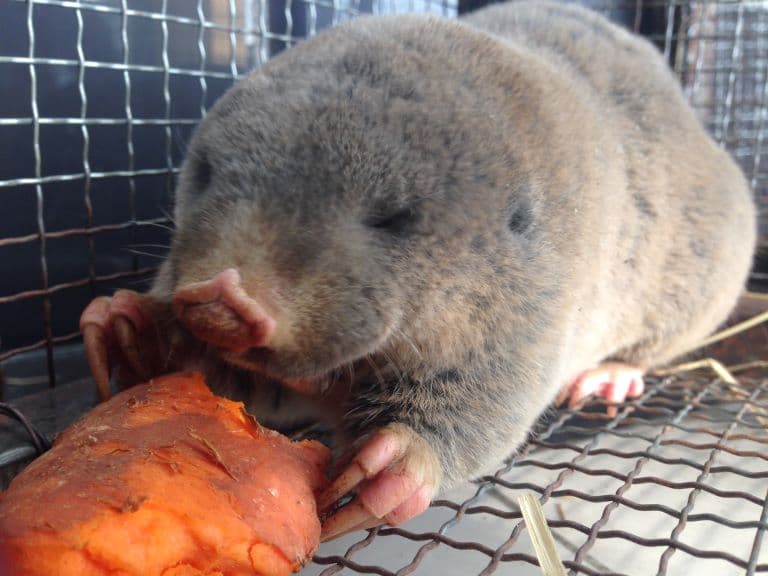Zokor Profile
We’ve championed the intricacies of ecology and diversity of life under the soil before, but it’s worth repeating that there is an entire world of micro and macro beings going about their daily lives almost entirely unnoticed.
Some of the larger ones would have gotten away with it, too, if it weren’t for those pesky mounds they throw up in gardens and farmland. Moles are the usual suspects, but in Eastern Eurasia, there’s another kind of rodent, that evolved independently to look and behave very similarly.
Zokors are aggressive little sausages that fill a similar niche to moles in some of the most remote regions of Eurasia.

Zokor Facts Overview
| Habitat: | Woodlands, steppes, river valley meadows, pastures, old agricultural fields, and vegetable gardens. |
| Location: | China, Russia, Kazakhstan, Siberia |
| Lifespan: | Around 4 years |
| Size: | Around 27cm (10 inches) long |
| Weight: | Up to 560g (20 oz) |
| Colour: | Grey-brown |
| Diet: | Mostly herbivorous: roots, bulbs, rhizomes; some invertebrates, fruit |
| Predators: | Owls, snakes, mammalian carnivores |
| Top Speed: | Unknown |
| No. of Species: | 6 |
| Conservation Status: | Least Concern |
These chunky little diggers are an adorable mole-analog, unrelated to true moles, but recognisable, nonetheless. Like moles, they have reduced vision, huge, digging hands, and an incredible sense of smell and touch.
Zokors are doing pretty well so far, but a surprising rise in the trade of their bones, as well as the usual habitat destruction, threatens to change that.
Interesting Zokor Facts
1. They’re fossorial
As members of the Spalacid family, zokors are closely related to mole rats (much more so than they’re related to with moles or rats!)
Spalacids are a group of burrowing rodents with cute puffy cheeks and a bold attitude. There are six genera, among which, two – Myospalax and Eospalax – represent the zokors.
Fossorial is one of those nerdy words oologists love to use. It’s up there with arboreal and cursorial and various other –ials that give an insight into some behavioural qualities of the animal.
In this instance, it’s a behaviour that puts these animals in the same place you’d find fossils: in the ground. Fossorial animals are those who dig.
And as highly-accomplished diggers, zokors have evolved some excellent adaptations to a fossorial lifestyle.
2. They have self-sharpening claws
If you’ve ever had a cat painfully knead biscuits on your chest while you’re reclining with a laptop, trying to write an animal blog, you’ve witnessed the self-sharpening ability of claws.
Zokor claws, like cat claws, are layered sheaths of keratin, and unlike our fingernails, they routinely slough away with use, revealing a fresh, sharp layer beneath.
This way, zokor claws stay strong and sharp for digging throughout their lives.

3. They’re sausages
There’s no use for a tapering body pattern if all you’re going to be doing is digging. Being an even-thickness all the way down allows for a great fit inside a tunnel and easy access to the dirt with both front and rear legs.
This is why zokors have long, cylindrical bodies, covered in thick, soft fur with some whiskers at the front end.
Even their eyes are covered in fur, so as not to get dirt in them. Though, vision isn’t much use to such an animal so the zokor’s eyes have atrophied to almost nothing. There are no external ears and their legs are short and stumpy, so the whole thing comes almost like a prepacked sausage that’s been rolled over the carpet. 1
4. They’re aggressive
But make no mistake, this is a sausage with attitude.
Unfortunately for the Zokor, the best description of any animal like this was already given to gophers, when they were described as Homely, belligerent sausages. But this description could be very well awarded to the zokor, too, as these burrowing rodents are known to be fiercely territorial and aggressive, despite being very small and cylindrical.
5. They’re headbangers
Spending most of their time underground, they don’t use visual cues to communicate, and shouting with a high-pitched little rodent voice doesn’t send sound very far through the thick earth.
Ground-based communication needs much more bass, and some species of zokor have been witnessed banging their heads against the walls of their tunnels to communicate. Their other senses are highly attuned to vibration and movement, and their sense of touch is exceptional, so they’re more than capable of feeling their way around and listening out for when they’re encroaching on each others’ turf.
Still, if they’re cornered, they’ll make a grunt of a hiss to let you know they’re unhappy. 2

6. They have a serious impact on soils
Burrowing animals play a major role in soil dynamics, both positively and negatively. Zokors, like moles, dig extensive tunnels under the ground which of course improves aeration and drainage, but it also reduces runoff, which helps maintain nutrients in the soil.
However, simulations have shown that their presence also increases soil erosion, by creating mounds on the surface that bring erodible materials from beneath.
So, having Zokors around is a mixed bag when it comes to agriculture.
7. They’re doing great!
All six species are of Least Concern, though for many, the population trends for most are unknown.
Habitat loss remains the single biggest threat to all Zokors, as it does to most species today, but for now, they seem to be proving to be resilient. Some species, such as the false Zokor, and Myospalax aspalax, are so remote that even this isn’t a threat to them, yet. 3 4

8. Though they are harvested for their bones
Chinese traditional medicine seems to revolve around the whimsical nature of grinding up vulnerable animals for no apparent benefit. While various (though, by no means all) herbal remedies are effective, anything involving bones and horns and such doesn’t appear to be, at all.
Tiger bone is one such remedy, traditionally “used to treat chronic pains by its functions of strengthening the muscles and bones, expelling wind and cold, and relieving pain and convulsion”. The trouble with this one is that there appears to be some legitimacy to its effectiveness.
But instead of isolating and synthesizing the active compounds, tigers have been almost eradicated.
And since tigers are becoming more or less extinct as a result of this nonsense, practitioners have turned to the Zokor to meet their needs.
Coupled with the attitudes towards such a significant agricultural pest, it’s thought that zokors may be in danger in the near future.
Zokor Fact-File Summary
Scientific Classification
| Kingdom: | Animalia |
| Phylum: | Chordata |
| Class: | Mammalia |
| Order: | Rodentia |
| Family: | Spalacidae |
| Genus: | Myospalax and Eospalax |
Fact Sources & References
- “Spalacidae blind mole rats, African mole rats, zokors, and bamboo rats”, Animal Diversity Web.
- Mingyu Chen (2021), “Chinese zokor (Myospalax fontanierii) excavating activities lessen runoff but facilitate soil erosion – A simulation experiment”, Science Direct.
- “Myospalacinaezokors”, Animal Diversity Web.
- Yifan Li (2017), “Traditional Chinese Medicine Bionic Tiger Bone Powder for the Treatment of AI-Associated Musculoskeletal Symptoms”, PubMed Central.
